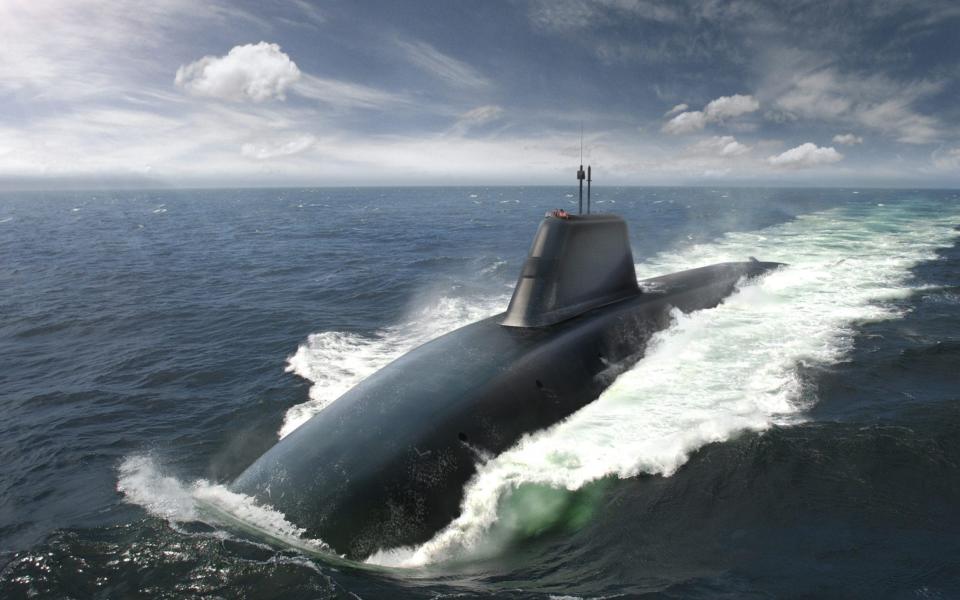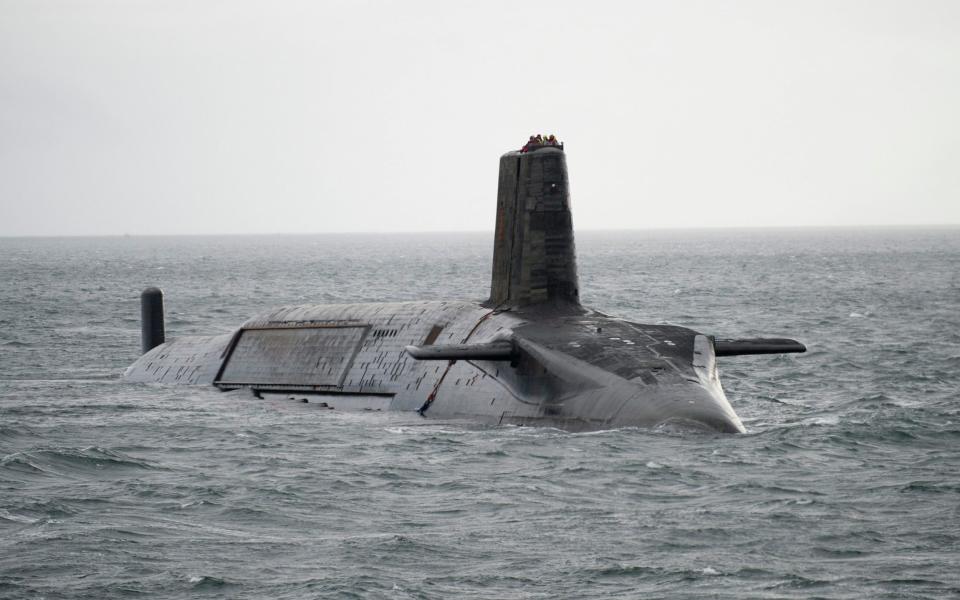Trident replacement: How Dreadnought nuclear submarine compares to Russian rivals

Britain has invested £2bn to forge ahead with its new nuclear deterrent amid the rising threat from Vladimir Putin’s invasion of Ukraine.
The Ministry of Defence has awarded defence contracts to BAE Systems and Rolls Royce to build four Dreadnought-class submarines, which will replace Britain’s current Vanguard vessels that carry Trident nuclear warheads.
This third phase of the programme, which is projected to cost a total of nearly £10bn, will deliver the first submarine for trials at sea by 2030. Dreadnought is set to be the largest ever built for the Royal Navy.
It comes as the outbreak of war has triggered a wave of speculation that the world is on the brink of a new Cold War, and focused nations on their nuclear capabilities.
The French Navy has been deploying more nuclear submarines into the Atlantic than at any point since the Cold War, while Putin sought to inspire confidence in his military on Monday as he wheeled out a thermonuclear missile in Moscow's Red Square as part of the Victory Day parade to mark Nazi Germany's surrender in 1945.
In Britain, the Government has also awarded a £160m Dreadnought crew training contract to Raytheon UK, which will take place at HM Naval Base, Clyde.
Frances Tusa, an independent defence analyst, says the contract awards are a clear sign the Royal Navy is feeling confident about its nuclear deterrent.
"The fact that they are signing training contracts is important because it shows they know they are getting closer to the delivery of the boats," he says.
"In the past, they've been faced with a situation where equipment is delivered and they actually don't have any trained personnel. I would take that as a sign of confidence in the programme. They are trying to harmonise the training programme with the delivery of the boats."
The Dreadnought programme is projected to cost £30bn in total, with the third phase estimated to be worth £10bn. The MoD has said it will support 30,000 jobs as well as 1,500 companies in the supply chain.

Simon Fell, Conservative MP for Barrow and Furness, says the latest announcement provides "surety to BAE and supply chain businesses".
He says: "It is reassuring to know, with everything going on in the world, that the continuous at sea deterrent is keeping us safe around the clock. This announcement is a further commitment to the security of the UK and its allies in an uncertain world."
Each of the submarines will measure 153.6 metres in length - equivalent to three Olympic swimming pools - and be manned by 130 crew members.
Defence giant BAE is leading construction which is largely taking place in the Barrow-in-Furness shipyard, Cumbria. It has described the project as “one of the world’s most complex engineering challenges”, and aims to make the submarines totally silent while in operation.
Rolls Royce is on board as the supplier of the mini-nuclear reactors that will power the submarines. The company is building sealed reactors that are no larger than an exercise ball: similar yet smaller than the mini-nukes commissioned by Boris Johnson to support Britain's shift away from Russian energy sources.
First Sea Lord Admiral Sir Ben Key said the continuous defence system would provide "the ultimate guarantee of security" for Britain over the next fifty years.
According to Tusa, the manufacturers will be making sure the submarine is undetectable in every aspect of its design.
"Everything is going to be designed so that the boats are quiet, and that all needs to be designed from the ground up," he says.
"You can't add those design elements later. Any machinery has to be put on floating mats so that they aren't hard fixed to the hull and vibrate. All of that goes in when you build the submarine."
The Dreadnought will rival the US’s Ohio ballistic carriers, France’s Triomphant class and Moscow’s Borei counterpart.
America’s Ohio class submarines are 170m-long Trident missile carriers that can operate roughly 240m below sea level and carry 140 crew members at sea for up to 70 days before returning to dock. The US Navy currently has 18 Ohio class submarines - four with cruise missiles and the rest with rocket-propelled ballistic missiles.
France's Triomphant, meanwhile, is slightly smaller at 138m in length. According to local media, the French navy last month sent two more of these submarines to sea, from their base at Ile Longue on the North Atlantic coast in response to the Ukraine invasion. It marked the first time the country has deployed three nuclear submarines at once since the end of the Cold War.
"The UK has a strong history of building very advanced nuclear submarines. The Royal Navy would say the specifications they put into their submarines gives them an advantage over the US fleet,” says Tusa.
"The Australians have also opted for a British design for their nuclear-powered submarines. There are a number of reasons they might have gone for a British design, but ultimately if the American one was head-and-shoulders above it, then they would have gone for that."
As the threat heats up, eyes are on Russia’s capabilities and if Britain could defend itself in the breakout of nuclear war.
Moscow’s Borei class is the fourth generation of Russia's nuclear-powered submarine fleet: 170m in length and able to carry 16 missiles, it has the ability to dive approximately 430m deep. Putin’s navy plans to deliver a total of ten Borei-class submarines by 2027 as part of the most extensive submarine programme the country has embarked upon since 1991.
Tusa says: "In 2014, we thought the Russian army was superhuman. Now, I think we're asking: really? Their performance has been catastrophic.
"Since the 1980s, each generation of Russian submarine has gotten better, but everyone I've spoken to in the Royal Navy says we've got the whip hand. Our boats are better, our crews are better, our sonars are better and our weapons are better.
He adds: "I don't think they're being boastful, and it's not wishful thinking. They have long said no Russian attack submarine has ever been able to track one of our ballistic boats. They may have occasionally caught one on the sonar but they've never tracked it."

 Yahoo Finance
Yahoo Finance 